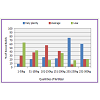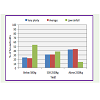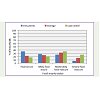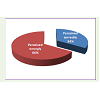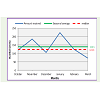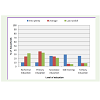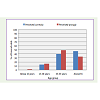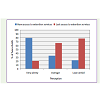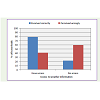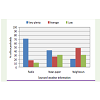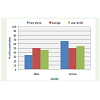Research Article
Factors Influencing Perception of ClimateVariability and Change among SmallholderFarmers in Swaziland
Sipho Felix Mamba*
Department of Geography, Environmental Studies and Tourism, University of the Western Cape, Bellville, South Africa, Private Bag X17, Bellville, 7535, South Africa
Corresponding author: Sipho Felix Mamba, Department of Geography, Environmental Studies and Tourism, Universityof the Western Cape, Bellville, South Africa, Private Bag X17, Bellville, 7535, South Africa, Phone: +26824161240, Mobile:+26876143532;; E-mail: felixsipho@gmail.com
Citation: Mamba SF. Factors Influencing Perception of Climate Variability and Change among Smallholder Farmers in Swaziland. Indian J Nutri.02 2016;3(2): 138.
Copyright © 2016 Sipho Felix Mamba. This is an open access article distributed under the Creative Commons Attribution License, which permits unrestricted use, distribution, and reproduction in any medium, provided the original work is properly cited.
Indian Journal of Nutrition | ISSN: 2395-2326 | Volume: 3, Issue: 2
Submission: Submission: 09/08/2016; Accepted: 03/09/2016; Published: 07/09/2016
Abstract
Climate change is a reality and has been confirmed by global scientific consensus to affect the productivity of agricultural ecosystems. Farmers perceiveclimate change differently and their perception of climate variables is key for rain-fed agriculture since farmers cope with climate change based on their perceptionsof changing climate patterns. This study contributes to the emerging climate change, food security debate by investigating the factors affecting perception ofclimate variables and associated impact on local agriculture among smallholder farmers in Swaziland. The study drew empirical data from a household surveyof 270 maize farming households in the Middleveld region of the kingdom of Swaziland. Using this data, the study analysis smallholders’ perception of climatechange and its associated impacts on local agriculture, crop yield and resulting food (in) security in Swaziland. Results suggest that most farmers perceivedclimatic changes and its negative impact on agriculture and considered climate change as a salient risk to their future livelihoods and food security. Different levelsof perception were expressed in terms of climate change and the impact on traditional rain-fed agriculture. Age, education level, gender and access to climateinformation and extension services were found to significantly affected perception levels. Increased access to agricultural support services through extensionofficers is recommended along with improvement in accurate weather focusing and information dissemination to rural farmers. It is also recommended that forany policy directed at assisting farmers to perceive correctly or accurately climate variables, and rainfall in particular there is need to take on board the manyyears of farming experience of older farmers since they possess certain skills and indigenous knowledge that help them perceive accurately compared to theircounterparts (younger farmers). Also, there is need to enhance farmers’ education level, particularly to provide training for farmers on important skills that canenhance their accuracy of perception so that they can make necessary input investments and consequently get better yield hence improve their food security.
Keywords: Perception; Climate Change; Rainfed agriculture; Swaziland
Introduction
Climate change is a reality and has been confirmed by globalscientific consensus to affect agricultural systems [1-3]. The factthat climate has changed in the past and will continue to change inthe future underlines the need to understand how farmers perceiveand adapt to climate change [4]. How farmers perceive climatechange and variability is therefore crucial, particularly for rain fedagriculture since perception strongly affects how farmers deal with climate-induced risks and opportunities, and the precise nature oftheir behavioural responses to this perception will shape adaptationoptions, the process involved and adaptation outcomes [1,5] hencecontribute negatively or positively to household food security.
Extensive body of literature is in existence on the climate changeand food security nexus and how perception of climate changeinfluence adaptive responses and resulting food (in) security [6-11].Different factors have been identified to influence farmers’ perception of climate change and variability and how these factors furtherinfluence adaptive responses, crop production and food security.Among the major factors identified to influence perception andhence adaptation include age, gender, education, access to extensionservices, access to weather information, household size, access tocredit among others [4,12-15].
Older farmers tend to perceive accurately compared to theircounterparts (younger farmers) due to their many years of farmingexperience and use of indigenous knowledge that help them perceivecorrectly climate variables such as rainfall in the beginning of eachfarming season. Likewise, exposure to education or training is alsoinstrumental in improving perception of climate variables [15].Educated farmers perceive better climate variables than those whohave never been to school or underwent skills training. This maybe due to their better understanding of the climate system andcompetence in interpretation of climate data. As such, exposure toweather information and extension services significantly influenceperception of climate change [4,12,14,15] because it is based on suchexposure and interpretation of these information that farmers canperceive better climate variables where again their understanding ofthe information become key.
The role of women in agriculture and food production has longbeen established in developing countries, thus the role of gender inperception cannot be underestimated. Agriculture in most patriarchalsocieties in the developing world is left in the hands of women(female farmers) as men migrate in search for job opportunities.Female farmers, due to increased exposure, therefore tend to perceivebetter climate variables such as rainfall. This is due to their farmingexperience, particularly in regions where agriculture relies exclusivelyon rainfall. For them to make investment decision, they need to firstconsider the behavior of the climate system and past rainfall trends.
The influence of farmers’ perception and the factors affecting itremain crucial and cannot be overlooked if agricultural performance isto be improved in developing countries of the south where agriculturestill relies heavily and almost exclusively on rainfall. With the currentclimate change crisis which has resulted in the shifting of farmingseasons, unpredictable rainfall and increased weather variability[16-20] it is even more important to come up with strategies to helpfarmers to accurately perceive weather variables.
Farmers tend to invest more on input (make proper investment)when they perceive rainfall to be plenty or sufficient with the hope toget higher returns and neglect investment when they perceive rainfallto be low with the fear of making a loss (fear that their investmentmight go to waste) in case there is no rain (Figure 1) [21] which in turnaffect crop yield and food security (Figure 2 & Figure 3). For example, whenfarmers perceive rainfall to be plenty, they are not reluctant to investmore on inputs such as fertilize (apply more quantities of fertilizer perhectare as recommended) and invest less when perceiving low rainfall(Figure 1). As can be observed, majority 75 percent and 60 percentof farmers who perceived that rainfall will be plenty invested 201-250kg and 251-300kg of fertilizer, respectively as opposed to thosewho perceive that there will be low rainfall who invests less (Figure 1).
Poor input investment, as expected, affect crop productivity. Thismeans that perception indirectly affect crop yield through poor input investment (Figure 2). Farmers who perceived that rainfall will beplenty (42.7%) or at least average (43.8%)obtained better yield perhectare (above 2500kg of maize) due to proper investment in inputwhile more than half (53.4%)of farmers who perceived that rains willbe low got low yield (below 500kg) due to insufficient investment ininputs (Figure 2).
Shortfall in food production has a direct impact on the foodsecurity status of affected households, mainly for rural householdswhere food availability is ensured, above all things through foodproduction. However, food security goes beyond producing foodto include issues of access (linked also to purchasing power ofhousehold) utilization (which related to nutrition and diet) andstability of food supply (which alludes to seasonal variation in supply)thus the relationship between food security and perception was nota strong and not significant (when tested for significance), but doesreflect the relationship between the two (Figure 3). Majority of thosefarmers who perceived rainfall to be plenty were either food secure(35.6%), mildly food secure (27.8%) or at least moderately foodinsecure (25.8%) (Figure 3).
How farmers perceive climate variables is crucial for rain-fedagriculture as it influence investment decision in relation to amountof input used. Farmers invest adequately or appropriately when theyperceive rainfall to be plenty and abandon investment when theyperceive rainfall to be low. Likewise, even in favorable years whererainfall is sufficient, farmers might neglect making proper investmentin inputs resulting to poor crop yield amidst plenty of rainfall due topoor or wrong perception of climate change and weather variablessuch as rainfall in the onset of farming season. The importance ofproper perception therefore cannot be overemphasized.
In Swaziland, like in many other developing countries, theagricultural sector is highly dependent on rain-fed production andtherefore vulnerable to weather shocks. Maize is the primary staplecrop and is widely grown by smallholder farmers throughout thecountry, with a dual sorghum-maize regime found in the Lowveldregion and fewer parts of the Middleveld of Swaziland. Among thesmallholder farmers almost all production is rain-fed with very fewfarmers using mechanized irrigation. Climate change thereforehas significantly reduced agricultural production and exacerbatedpoverty and food insecurity in the kingdom [22,23].
Drought and seasonal variation and rainfall variability has beena major threat to food security, with large declines in maize yieldconsistently occurring in seasons with below normal rainfall [22,24].Studies have been conducted in Swaziland to quantify the impact ofclimate change on agricultural yields, and how farmers are respondingto such changes. Among the existing climate change and food securitydiscussion in the country is that farmers perceive climate change andvariability differently and that their perception influence investmentdecisions, crop yield and food security [5].
It is important therefore that farmers perceive climate changeand variability correctly as this is the basis for their adaptation[1,12-14].
The present study makes several contributions to the existingclimate change and food security debate and literature on how bestto interrogate climate trends, impacts and adaptation strategies andfood security amongst smallholder farmers in Swaziland by buildingon the existing climate change and food security literature.
Methodology
Methodologically, the study was mainly exploratory in design andutilized the use of both primary and secondary sources. Methodological triangulation was employed to collect data using a structured, precodedhousehold questionnaire which was administered to theselected households. Focus group discussions (with communityelders) and observation were also used to harness diverse ideas aboutclimate change perception and factors that influence it in the studyarea and assisted in ‘cross-checking’ the results.
Farmers’ perception of climate change and weather variabilitywas established using the modified climate change and food securityframework. The framework was used to establish how farmersperceived climate change and weather variability and how theirperception influenced adaptive responses of food systems and foodsystem activities.
Selection of Study Area and Subjects
The study employed multi-stage sampling. The first stage involvedpurposive sampling of the Middleveld (due to its wide range of agroecologicalconditions and being ‘home’ for most maize farmers),second stage involved the selection of three constituencies fallingwithin the Middleveld region from which communities were thenselected (both spatially selected). Spatial sampling was found moreideal since it is recommended for studies where spatial variationsin the distribution of phenomena over an area are studied such asrainfall and soils to avoid sampling areas with the same physiographiccharacteristics [14]. A total of 270 households with 90 from each constituency were selected to be included in the study.
Data Analysis and Presentation
Data collected through use of questionnaires was analyzedthrough the use of Statistical Package for Social Sciences (SPSS)version 20. The climate parameters, that is, temperature and rainfallfrom the department of meteorological service was used to determineaccuracy of famers perception of climatic variables such as rainfall.Frequencies and cross tabulations were used to find relationshipsamongst the variables. Thematic coding was used to analyze datacollected from the focus group discussions and graphical techniques(with some form of narrations) were used to present data.
Results and Discussion
While farmers are able to note that the climate is changing andrightly observed significant changes in mean rainfall, frequency,intensity and duration of droughts in Swaziland [22,5], majority offarmers face a serious challenge in perceiving correctly the amount ofrainfall to expect in the beginning of each farming season, when thisis the most crucial thing for most rural farmers relying on rainfall fortheir farming activities. In a study conducted in the Middleveld regionof Swaziland, it transpired that among 270 farmers studied, majority(66%) wrongly perceived the amount of rainfall in the beginning ofthe farming season (Figure 4) to be below average when the rainfallfor that farming season was actually plenty and above average (Figure 5) (any amount of rainfall above the median indicate plenty and viceversa) (Figure 5).
It was very important, therefore, to conduct a survey to determinethe different factors that influence farmer’s perception in Swaziland.It has already been established that perception of climate variablessuch as rainfall, influence investment decision and consequently cropyield and food security among farming households in Swaziland [5].
Determining factors that influence perception was thereforecrucial not only to help farmers perceive correctly (which is key forSwazi maize farmers and every famer relying on rain-fed agriculture)but also for agriculture extension officers and policy makers tomake sure that efforts directed to improving the performance of theagricultural sector could not be misplaced but be correctly directedto such factors in an effort to improve crop productivity and enhancefood security among rural (and urban) households in Swaziland.
Education level and perception of climate change andvariability
Education levels of farmers were cross tabulated with perceptionto determine if the level of education of the farmers has an influenceon how they perceive the amount of rainfall in the start of a farmingseason. The survey found that education level influence perception.Farmers who perceived correctly (plenty) the amount of rainfallexpected in the beginning of the farming season are those who eitherhave training in certain skills (28.9%), or those who went up to tertiarylevel in their education (25.5%) or at least secondary level (25.6)(Figure 6). It was interesting to note that majority of those withoutany form of education wrongly perceived the amount of rainfall aslow (32.2%) or average (24.4) (Figure 6) when the rainfall was actuallyplenty or above average (Figure 5).
Age and perception
The survey also found how farmers perceive climate variables andthe amount of rainfall in particular is also influence by the age of thefarmer. Majority of farmers who perceived correctly (46.7%) happento be those above the age of 55 (Figure 7) and below 34 years werenot that accurate in their perception as majority (15.6%) perceivedwrongly in the age group 15-34 years and none perceived correctlybelow the age of 15 years.
From the results above, it is clear that age and education level offarmers influence how they perceive climate variables. These findingsare consistent with Dhaka et al. findings who also observed thatfarmers’ education level and, age influence their perception of climatevariability and change. Dhaka observe that age is directly linked tofarming experience. Old farmers possess indigenous knowledge onhow to perceive climate variables, particularly the amount of rainfallin the beginning of each farming season. Such knowledge, as theresults indicate, is not possessed by the younger farmers but the olderones, and need to be passed on to the young generation to help themperceive correctly important climate variables such as rainfall, andthat should be the focus of agricultural policies aimed at improvingfood production.
With respect to education, it can be observed that education alsohas a role to play in influencing the way farmers perceive climatechange and variability, which is consistent with Kamruzzaman [15],findings who also observed that farmers with higher level of educationperceived environmental factor and climate variables correctly andvice versa. This means that an effort to help farmers perceive correctlyneeds to also focus on improving the level of education of farmers,particularly to equip then with skills relating to farming as it could beobserved that farmers who possess skills or has been trained in certainskills perceive climate variables better followed by those with tertiaryor at least secondary education. This suggests that to help improvehow farmers perceive of climate variables, education (both formaland informal) must be emphasized.
Farmers’ perception and access to weather data andextension services
Another factor that was found to influence farmers’ perceptionof climate change and variability was access to extension services.Majority of farmers who correctly perceived rainfall to be plenty(79.9%) in the start of the farming season are those with access toextension services and majority of those who perceived rainfall to beeither average (66.2%) or low (78.2%) and happen to perceive wronglyare those without access to extension services (Figure 8). Similarly,access to weather information also shapes farmers’ perception climatevariables. Majority of farmers with access to weather information(78.6%) perceived correctly the amount of rainfall in the beginning ofthe farming season compared to those with no access (Figure 9) whilemajority of those who lack such access (59.2%) wrongly perceived theamount of rainfall.
The findings indicate that access to extension services andweather information affects how farmers perceive climate variables.Those farmers with access to extension services and weather datatend to perceive correctly the amount of rainfall at the start of a farming season. These findings mirror those by Legesse [12] in astudy conducted in Doba district in Ethiopia who also found thatfrequency of extension contact and training are the determinantfactors influencing perception and adaptation strategies which is alsosimilar to Kamruzzaman [15] findings in a study conducted in SylhetHilly Region in Bangladesh who also observe that access to weatherinformation influence farmers’ perception. This means that access toextension services needs to be improved as a step towards improving farmers’ perception of climate change and variability.
It was also interesting to note that a radio plays a major rolein disseminating information on weather and quite instrumentalin shaping farmers’ perception of climate variables, particularlyin Swaziland. Majority of those who correctly perceived rainfall asplenty (71.3%) accessed weather information through radios or atleast newspapers (42.1%) (Figure 10). Although some farmers rely ontheir relatives or neighbours for weather information, this practice isnot recommended since this information is not always reliable.
It is not surprising that radios play a major role in weatherinformation dissemination in Swaziland because majority of farmershave access to radio hence are able to access weather informationon a daily basis. Although newspapers are also a good source ofweather information (which is also disseminated daily) in Swaziland,most rural farmers do not have daily access to newspapers andothers cannot read English (language used by main newspapers inSwaziland).
Farmers’ perception and gender
Gender was also analyzed to determine if it influences perception.The results indicate that female farmers tend to perceive correctlysince majority (66.3%) of the female farmers interviewed perceivedrainfall as plenty which was correct perception compared to theircounterparts (33.7%) (Figure 11).
These findings are similar to Deressa et al. findings who alsoobserved that gender influence how farmers perceive climate changeand variability [4]. This was not surprising for Swaziland becausewomen are the most active in farming compared to men. It isexpected, therefore that based on their level of engagement in farmingactivities which gives them experience, they are well positioned toperceive correctly the amount of rainfall in the beginning of eachfarming season, which is what they do every year.
Conclusion
There is a global consensus about the reality of climate changeand its harmful effects on the agricultural sector, and for rain-fedagriculture in particular. Scholars observe that climate change is nota feature of the world that we might end but one that we need to livewith. As such, there is need for proactive strategies that can help usadapt to the fast changing climate. One way to deal with the effectsof climate change on agricultural productivity is to improve the waysmall holder farmers perceive climate change and climate variables,particularly the amount of rainfall expected in the start of everyfarming season in order to make appropriate investment decisions.
Different Farmers perceive climate change and climate variablesdifferently. Among the factors identified to affect their perceptioninclude education levels, age, gender, famers’ access to weatherinformation and extension services. Farmers who perceived rainfallto be plenty and happen to perceive correctly were mainly thosewho are educated either with skills training, tertiary or secondaryeducation. Majority of farmers who perceived rainfall to be averageor low and happen to perceive wrongly were those with no formaleducation. Age was also found to significantly influence perception.Majority of farmers above the age of 55 years perceived correctly the amount of rainfall expected in the start of the farming season, whilemajority in the other age groups: 15-34 and 35-55 perceived wronglywith no one who perceived correctly among the youngest farmers(age below 15 years).
Older farmers are, therefore seen to perceive better than theircounterparts, which alludes to the importance of age which isdirectly linked to farmers’ farming experience and use of indigenous knowledge which help them perceive not only the onset of rains butalso the expected amount. These findings are consistent with Dhakaet al. findings in their study conducted in Bundi district in India onfactors affecting farmers’ perception of climate change that identifiededucation level, age and farming experience to affect perception.This means that based on farming experience, old farmers possessknowledge that can help young farmers to be able to perceive correctlythus there is need to utilize this knowledge and there is also need toeducate farmers to help them improve their perception of climate andother farming-related phenomena.
Gender also plays a major role in enhancing farmers’ perception.Females, due to their exposure and involvement in farming activitiestend to perceive climate variables better than males. Efforts tohelp males perceive correctly are needed and more programs arealso needed to enhance female perception as the back born of theagricultural sector.
Access to extension services and weather information is alsocrucial in shaping perception. Those farmers with access to extensionservices and weather information tend to perceive correctly alludingto the importance of improving farmers’ access to weather data andagricultural extension services through improved weather focusingand information dissemination. It is therefore important that all thefactors influencing farmers perception are taken into considerationto improve their perception because these factors further influencehouseholds’ choice of adaptation strategies to climate as scholars haverightly observed [12,25,14,26,27].
References
- Adger N, Dessai S, Goulden M, Hulme M, Lorenzoni I, et al. (2009) Are there social limits to adaptation to climate change? Climatic Change 93: 335-354.
- Adger WN, Arnell NW, Tompkins EL (2005) Successful adaptation to climate change across scales. Global Environmental Change 15: 77-86.
- Brooks T (2013) The Real Challenge of Climate Change. Durham University.
- Deressa TT, Hassan RM, Ringler C (2011) Perception of and adaptation to climate change by farmers in the Nile basin of Ethiopia. Journal of Agricultural Science 1: 23-31.
- Mamba SF, Salam A, Peter G (2015) Farmers’ Perception of Climate Change a Case Study in Swaziland. Journal of Food Security 3: 47-61.
- Gregory PJ, Ingram JSI, Brklacich M (2005) Climate change and food security. Philosophical Transactions B, (360) 2139-2148.
- Food and Agriculture organization of the United Nations (2008) Climate Change Adaptation and Mitigation in the Food and Agricultural Sector. Climate Change, Energy and Food: High-Level Conference on Food Security, the Challenges of Climate Change and Bioenergy, (March), 1-17.
- Hoffmann U (2011) Assuring Food Security in Developing Countries under the Challenges of Climate Change : Key Trade and Development Issues of a Fundamental Transformation of Agriculture. EADI September 2011 Conference, (201).
- Vermeulen SJ, Campbell BM, Ingram JSI (2012) Climate Change and Food Systems. Annual Review of Environment and Resources 37: 195-222.
- Vermeulen SJEA (2010) Agriculture, Food Security and Climate Change: Outlook for Knowledge, Tools and Action. CCAFS Report 3. Copenhagen. Agriculture 1-16.
- Hannah L, Ikegami M, Hole DG, Seo C, Butchart SHM, et al. (2013) Global climate change adaptation priorities for biodiversity and food security. PloS One 8: e72590.
- Legesse B, Ayele Y, Bewket W (2012) Smallholder Farmers’ Perceptions and Adaptation to Climate Variability and Climate Change in Doba District, West Hararghe, Ethiopia. Asian Journal of Empirical Research 3: 251-265.
- Tazeze A, Haji J, Ketema M (2012) Climate Change Adaptation Strategies of Smallholder Farmers : The Case of Babilie District , East Harerghe Zone of Oromia Regional State of Ethiopia. Journal of Economics and Sustainable Development 3: 1-13.
- Tesfay KG (2014) Small Holder Farmers’ Adaptation Strategies to Climate Change in Ethiopia (The Case of Adwa Woreda, Tigtrai Region). Mekelle University College of Business and Economics.
- Kamruzzaman M (2015) Farmers’ Perceptions on Climate Change : A Step toward Climate Change Adaptation in Sylhet Hilly Region. Universal Journal of Agricultural Research 3: 53-58.
- Obioha EE (2009) Climate variability, environment change and food security nexus in Nigeria. Journal of Human Ecology 26: 107-122.
- Kotir JH (2010) Climate change and variability in Sub-Saharan Africa: a review of current and future trends and impacts on agriculture and food security. Environment, Development and Sustainability 13: 587-605.
- Edame GE, Ekpenyong AB, Fonta WM, Ejc D (2011) Climate Change, Food Security and Agricultural Productivity in Africa : Issues and policy directions. International Journal of Humanities and Social Sience 1: 205-223.
- Singh RB (2012) Climate Change and Food Security. In Improving Crop Productivity in Sustainable Agriculture (pp. 1-22).
- Wagesho N (2016) Analysis of Rainfall Variability and Farmers ’ Perception towards it in Agrarian Community of Southern Ethiopia. Journal of Environment and Earth Science 6: 99-107.
- Mamba SF, Salam A, Peter G (2015) Farmers’ Perception of Climate Change a Case Study in Swaziland. Journal of Food Security 3: 47-61.
- Manyatsi AM, Masarirambi MT, Hachigonta S, Sibanda LM, Thomas TS (2012) Southern African Agriculture and Climate Change: A Comprehensive Analysis - Swaziland. Washington D.C. International Food Policy Research Institute (FANRPAN).
- Oseni TO, Masarirambi MT (2011) Effect of Climate Change on Maize (Zea mays) Production and Food security in Swaziland. Environ Sci 11: 385-391.
- Manyatsi AM, Mhazo N (2014) Comprehensive Scoping Study of Climate Smart Agriculure Policies in Swaziland. Draft Report: Food, Agriculture and Natural Resources Policy Network (FANRPAN).
- Fetene M, Okori P, Gudu S (2011) Delivering New Sorghum and Finger Millet Innovations for Food Security and Improving Livelihoods in Eastern Africa Emmarold E Mneney , Kassahun Tesfaye International Livestock Research Institute ( ILRI ). International Livestock Research Institute.
- Lal R (2013) Food security in a changing climate. Ecohydrology & Hydrobiology 13: 8-21.
- Manyatsi AM, Mhazo N, Masarirambi MT (2010) Climate variability and change as perceived by rural communities in Swaziland. Research Journal of Environmental and Earth Sciences 2: 164-169.

